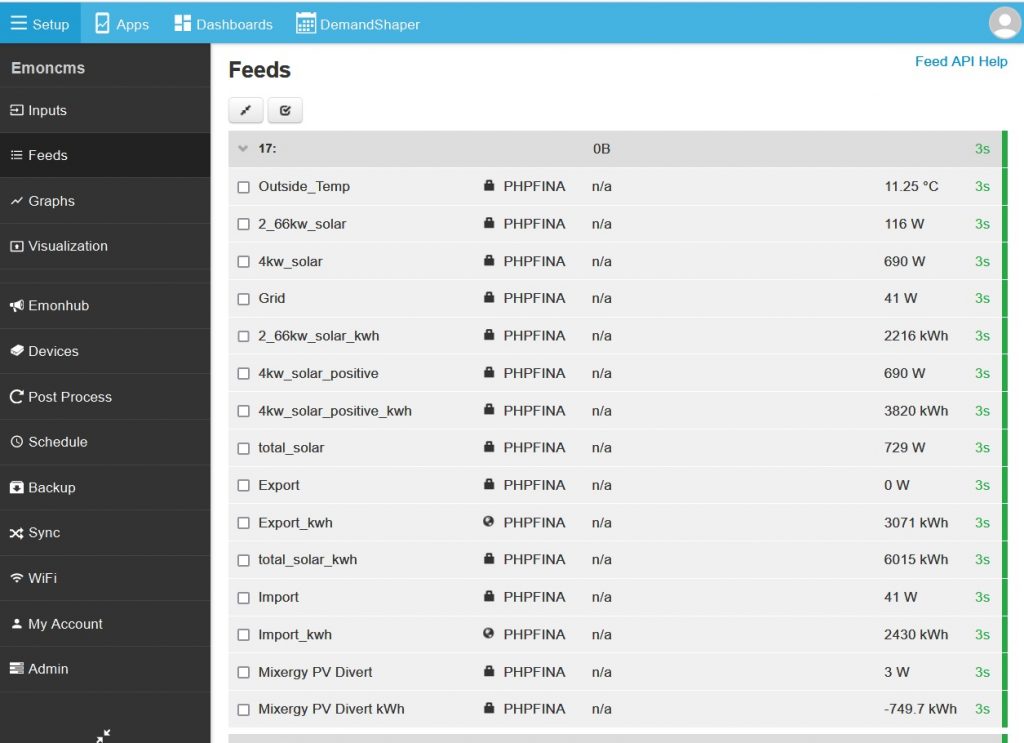Having been frustrated in my previous house by not knowing how my heat pump was performing, I was determined to remedy this in my new home. After some research, I settled on a system built by OpenEnergyMonitor.
The heart of the system is the EmonPi (since upgraded to EmonPi2), which is essentially a Raspberry Pi computer running the company’s open-source software with the provision of several connections for attaching monitoring equipment. By adding CT clamps to the system, the electrical energy demands of multiple appliances can be obtained. This makes it capable of monitoring home consumption, solar generation, EV charging, heat pumps, battery storage or any AC electrical circuit.
The data logging from these sources can be viewed locally in a browser or posted to a remote server for internet access. The data is displayed as inputs in the browser-based software, which need to be stored (logged) as Feeds, in order to be utilised.

Some of the available feeds in my monitoring system.
The software is very flexible, allowing the feeds to be manipulated mathematically and combined as necessary. They can then be displayed in various ways as required by the user. The documentation of this could be improved, but there are supporting YouTube videos and a helpful forum.


There are various additional sensors and units that can be added to the system, including monitoring temperature and humidity, and importantly for heat pumps, a heat meter interface. Adding a heat meter to the heat pump’s circuit allows the temperature of the flow and return water to be accurately measured, and thus measure the heat produced by the heat pump. By comparing this to the electrical energy used by the pump, an accurate figure for COP can be obtained.


A complete kit for heat pump monitoring can be purchased (Level 3 Heat Pump Monitoring Bundle) for about £550 currently. It obviously isn’t cheap, but I am glad I pushed the boat out and purchased an equivalent system. Having good data about the running of your heat pump is, in my view, essential to get it running efficiently. Cheaper options using a heat pump’s own internal monitoring sensors may be available by communicating via a communications protocol called Modbus. The accuracy of these systems will likely depend on individual makes, and their widespread accuracy has not yet been tested.
A good number of OpenEnergyMonitor users are showing their day-to-day heat pump data on http://heatpumpmonitor.org, and this is a good resource for seeing how different heat pumps and installations perform.



Very helpful. Thank you. Not cheap as you’ve said, but sounds relatively easy to install and then you’ve got some really accurate monitoring data.
It was this item I was pricing Mars https://shop.openenergymonitor.com/level-3-heat-pump-monitoring-bundle-emonhp/